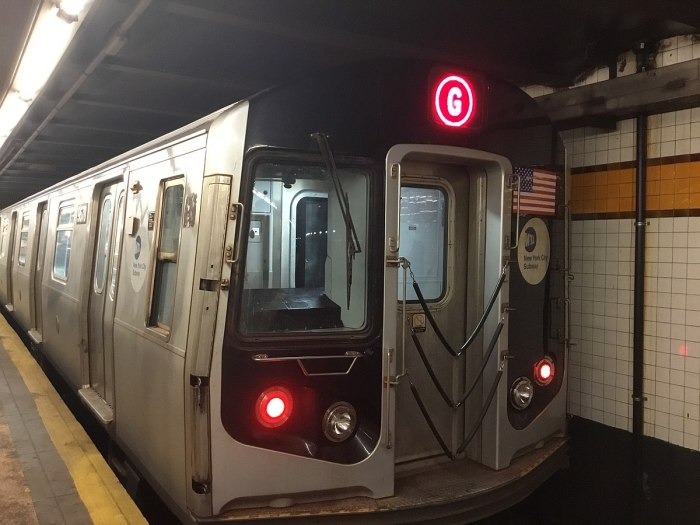
Herbert Murray didn’t understand what all the chirping was on the bus down to New York City. Birdsong, maybe? It was 2008, and he’d just been released from prison, nearly 30 years after being convicted for a crime he didn’t commit. Eventually, he realized the sounds were ringing cell phones. He hadn’t known how cell phones worked.
“I was totally behind on technology,” Murray, 60, says. He was visibly bewildered getting off at the Port Authority Bus Terminal. A man noticed the temporary clothes given to prisoners upon release. The man said he had once been incarcerated, too, and led Murray to the phone booths. “Congratulations,” the man said.
That was 10 years ago. Today, Murray goes through the bus terminal regularly on his way to work. This summer, he celebrated his 10-year anniversary at the Times Square Alliance a few blocks east.
“Herbert is our gift,” says Tom Harris, senior vice president of the Alliance, which has worked with nonprofits to employ people who’ve been in prison. “What he has been through, what would have made anyone just be a negative person . . . he is the opposite of negative.”
At the beginning . . .
It started in a Fort Greene subway station in 1981. An elderly, blind man was confronted by two black men in what law enforcement said was an attempted robbery. The blind man was shot and killed. The attackers fled the subway station. But some time later, according to Murray’s former lawyer, Frederick Feder, detectives circulated pictures of a group of young men who as teenagers had been arrested as youthful offenders.
One of the young men was Murray, who regretfully remembers tagging along with a tough crowd near a Fort Greene school, where they’d been caught stealing. But he had turned his life around after the earlier offense, and had found a job. He’d actually received a paycheck the night before the attempted robbery happened, says Feder. Murray knew nothing about the murder. But apparently his picture looked similar to one of the attackers, and despite having introduced six alibis at trial, he was convicted of felony murder.
Murray found out eventually that it was likely his brother Anthony, addicted to drugs at the time, who had done the deed. “We look like twins,” Murray says. His brother later died while in prison for drug-related crimes.
Murray had a hard time adjusting to prison, hammering out New York State license plates for a pittance and proclaiming his innocence. What authorities saw as his “lack of remorse” didn’t help in parole hearings. He unsuccessfully went through seven. Then, Feder, the lawyer, was able to get a letter from the judge who had presided over the case. Feder said the judge had told him that if it had been a non-jury trial all those decades ago, he would have acquitted. The evidence was that weak. Letters from the judge and Feder finally did the trick with the parole board and Murray was free.
That was all a long time ago now, Murray feels. In the years since, he has gone from feeling claustrophobic around crowds of people to loving the “hustle and bustle” of Times Square. He is now a supervisor, and patrols his territory from 42nd to 47th streets getting events set up in the pedestrian plaza expanse. He lives alone in New Jersey but has a good relationship with his daughter, who was a year old when he was arrested. Now he is a grandfather.
“He’s a remarkable guy,” says Feder.
Life after prison
Aside from his day job wrangling seating arrangements and jazz performances in Times Square, Murray became involved in the movement to close Rikers Island, which he calls the worst and most dangerous facility he spent time in.
Janos Marton, formerly of the advocacy group JustLeadershipUSA, says Murray was one of the first campaign members and became a leader.
Marton remembers Murray confronting Mayor Bill de Blasio at a fundraiser months before de Blasio came forward with a plan to close the jail complex. De Blasio put his hand on Murray’s shoulder and said they were on the same page, and talked about reforming Rikers. Murray wasn’t satisfied: he said he wanted to close Rikers, not reform it. The crowd cheered.
Now Rikers is scheduled to close, as Murray and the activists wanted (though not as soon as they’d hoped).
It’s just one way the city has changed since the years before Murray was consigned to prison (and yes, he now is adept with a cell phone). Murray, in his upbeat way, sees it as an upward progression. He remembers going to Times Square as a kid: $1 for three movies in the cruddy area. Now he keeps the place organized and loves every minute of it — except the dress up characters, who he feels are extorting people.
He’s spent time back in Fort Greene, too, the scene of his youth, where he has admired the outdoor dining, the new basketball stadium. Now he can walk around and appreciate what’s there.
“I didn’t know,” he says, “I was raised up in a beautiful area.”

































